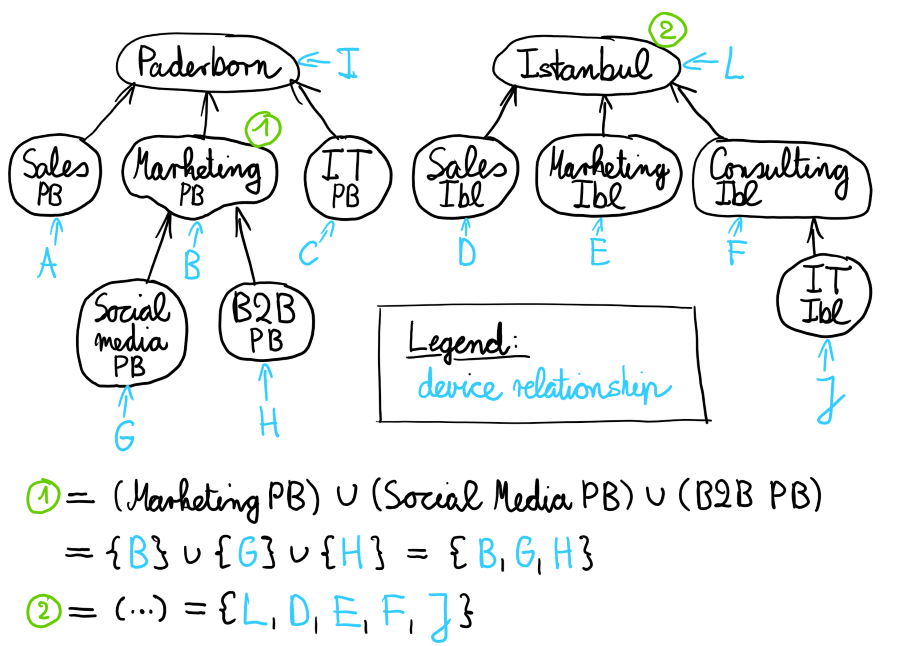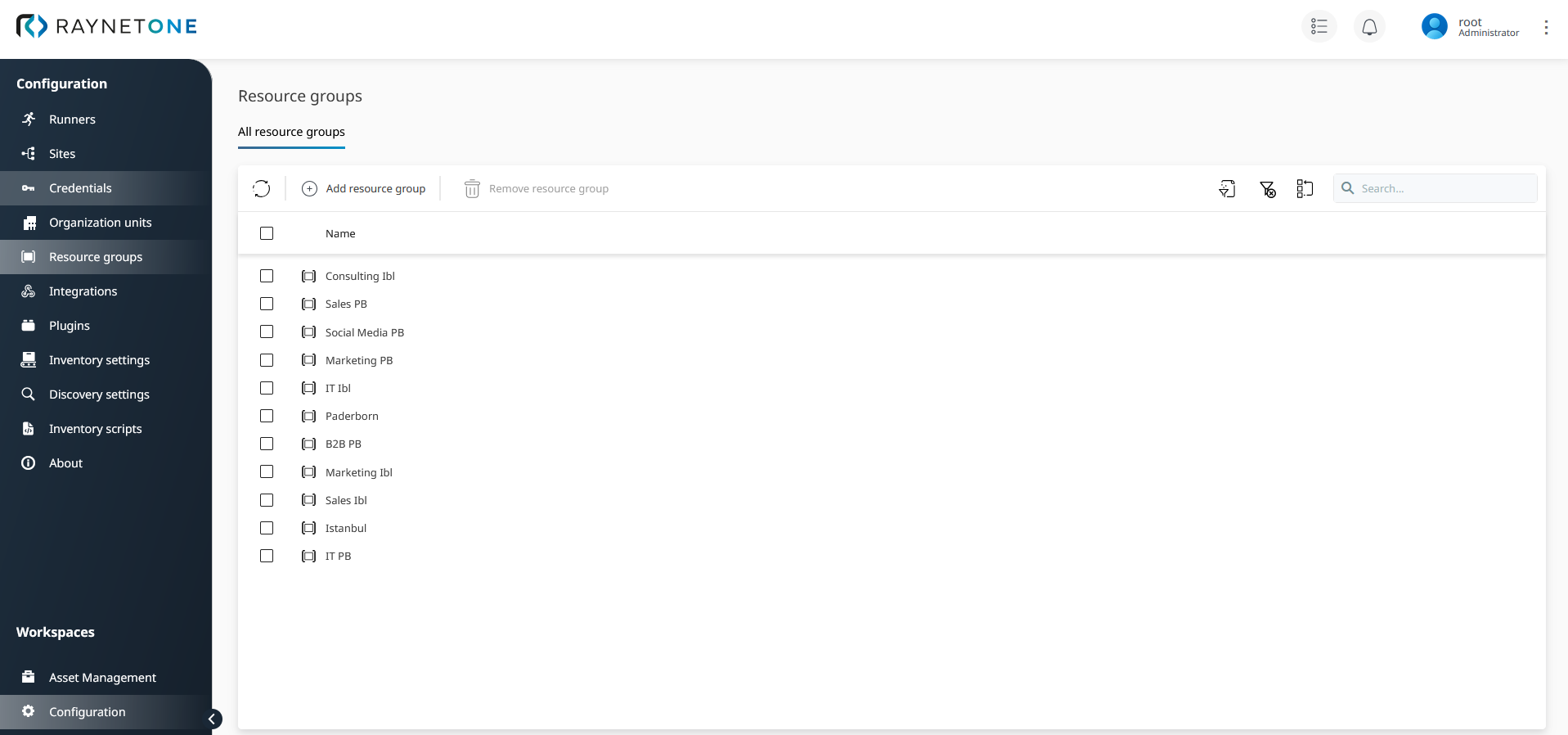There are many types of network resources. Resource groups are sets of any network resource type, allowing you to create categorizations of your own design (credentials, runners, devices, network definitions and Oracle databases). Organization units can be considered as attributed network resource sets limited to devices and network definitions. Thus, resource groups are the most powerful network resource grouping feature supported on the platform.
The resource groups are managed in a tree hierarchy. Each can have at most one parent but multiple children. There can be no circular relationships.
Network resource relationships target specific, fixed objects. Currently, there is no relationship based on dynamic network resource properties, such as regular expression selection matching the device names.

|
Note:
This feature doesn't have any impact on job execution in this Raynet One version. Prepare to migrate to this resource-set means in future versions.
|
Example IT landscape hierarchy

The above example hierarchy contains two company locations: Paderborn and Istanbul. Each location has got three departments. The departments Marketing PB and Consulting Ibl have got sub-departments. Every node in the graph is a network resource set. The identifying name of each node is distinct. If the network resources are limited to devices and network definitions, the given scenario can be modeled using either organization units and resource groups. The advantage of resource groups is the broadness of supported resource types, allowing you to even relate runners capable to perform jobs on certain parts of your IT landscape. Runner capability is defined by having the proper network routing definitions and infrastructure in-place.

The example IT landscape hierarchy registered into the system. You can see each node represented by a resource group object. The arrows in the original graph are child-to-parent relationships. The source of the arrow is the child resource group. Set the parent resource group during its creation in the wizard. You should start off by creating parent nodes, then move on to all children of each parent.

